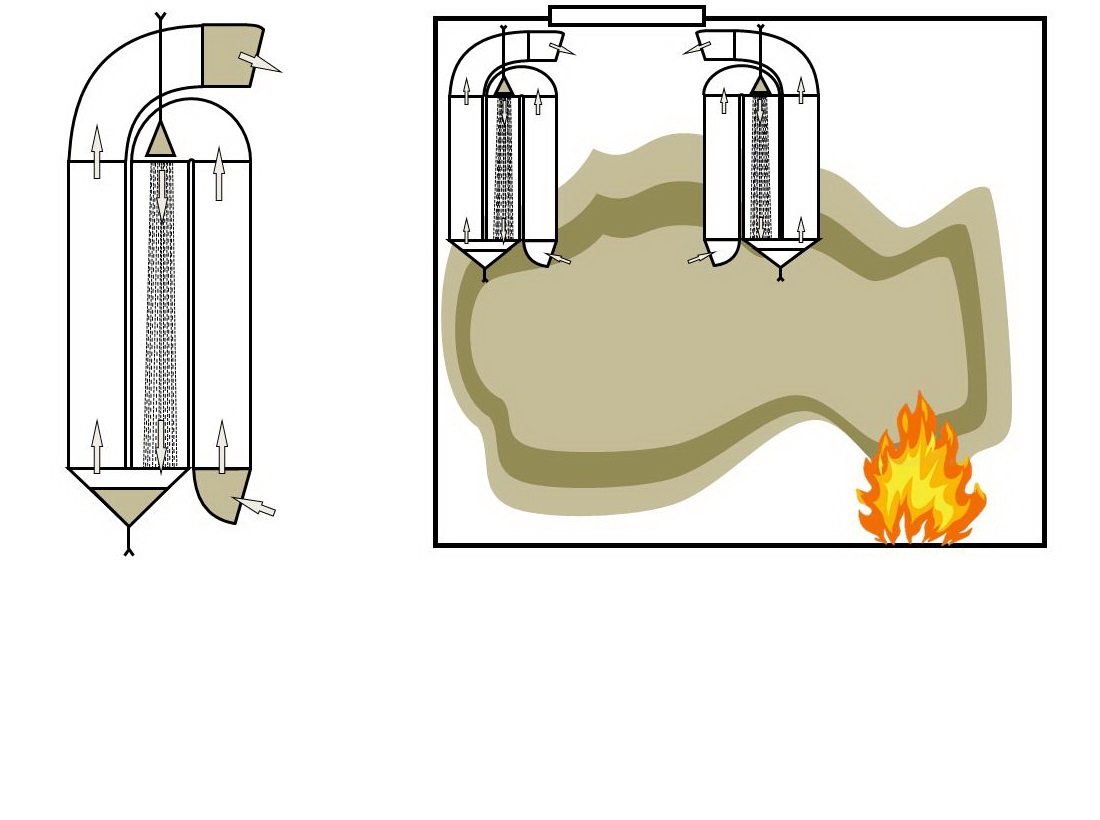Determining working characteristics of the excess air pressure system in an emergency hatch based on jet water-gas ejectors
DOI:
https://doi.org/10.15587/1729-4061.2024.313114Keywords:
water-gas jet ejector, emergency hatch, natural attenuation index, thermal energyAbstract
The object of this study is jet water and gas ejectors in the fire safety system of ships. The problem solved relates to the fact that in the event of a fire in the area of the exit from the ship's emergency room, the heat energy increases dangerously and a large amount of smoke spreads throughout the ship's rooms. These factors require immediate sealing of the emergency room, which limits the immediate access of emergency teams to the room. Installation of a local excess air pressure system in the emergency hatch on the basis of jet water and gas ejectors could make it possible to shield thermal energy and localize smoke gases in the emergency room without sealing it to ensure prompt access of emergency teams to it. The following results were achieved – the adequacy of theoretical studies of the processes of localization of flue gases in the emergency room without its sealing was confirmed by the experimental method. The investigated problem was solved by optimizing processes: the rate of change in the natural indicator of the weakening of environment during the start-up of the local excess air pressure system in the emergency hatch based on jet water and gas ejectors; the effectiveness of reducing the temperature of heated gases in the superstructure during the operation of the excess air pressure system in the emergency hatch based on jet water-gas ejectors. Special feature of the results was the formation of an air curtain obtained by the selection of a part of high-temperature flue gases in the housings of jet water-gas ejectors, their heat-mass exchange processing and output back into the flow. This created conditions under which thermal energy is shielded with an efficiency of 85–88 %. The scope and conditions of practical use of the results are shipbuilding and ship fire safety design
References
- Hrynchak, S. (2024). Determining performance characteristics of jet water-gas ejectors for an opening in a vertical fencing structure. Eastern-European Journal of Enterprise Technologies, 3 (10 (129)), 21–32. https://doi.org/10.15587/1729-4061.2024.305828
- Miroshnichenko, V. N., Sokolov, V. V., Sheverev, E. Iu. et al. (2002). Issledovanie dymoosazhdaiushchei i okhlazhdaiushchei effektivnosti ustroistv UDP GIBK. 065289.001. Naukovii vіsnik UkrNDІPB, 1 (5), 76–82.
- Zatcarinnaia, T. G. (2004). Lokalizatciia gazovozdushnogo potoka (dyma) vodianoi zavesoi reguliruemoi tolshchiny orosheniia. Zbіrnik naukovikh pratc, 1 (4), 238–243.
- Kuripko, O. V., Nikitin, E. V., Anokhin, G. A. (2002). Povyshenie ognestoikosti korabelnykh ograzhdaiushchikh konstruktcii: puti i metody issledovanii. Zbіrnik naukovikh pratc, 1, 164–169.
- Blintsov, V., Hrynchak, S. (2017). Development of the improved methods of fight against distribution of smoke on ship with systems of jet water–gas ejectors. EUREKA: Physics and Engineering, 6, 35–41. https://doi.org/10.21303/2461-4262.2017.00498
- Blintsov, V. S., Hrynchak, S. O. (2017). Theoretical substantiation of the method for designing ship apertures with the use of the air suppression system based on the jet water-gas apparatus. Collection of Scientific Publications NUS, 470 (3), 11–20. https://doi.org/10.15589/jnn20170302
- Hrynchak, S. O. (2016). Pat. No. 110777 UA. Sposib pidporu povitria v avariinomu liuku i prystrii dlia yoho realizatsii. MPK A62C 3/00. No. a201206290; declareted: 24.05.2012; published: 25.02.2016, Bul. No. 4, 4.
- Mayerhöfer, T. G., Pahlow, S., Popp, J. (2020). The Bouguer‐Beer‐Lambert Law: Shining Light on the Obscure. ChemPhysChem, 21 (18), 2029–2046. https://doi.org/10.1002/cphc.202000464
- Oehlert, G. W. (2010). A first course in design and analysis of experiments. Minneapolis: University of Minnesota Press, 679.
- Jiju, A. (2014). Design of Experiments for Engineers and Scientists. Elsevier Ltd, 276. https://doi.org/10.1016/c2012-0-03558-2
- Design of Engineering Experiments. Available at: https://www.studysmarter.co.uk/explanations/engineering/professional-engineering/design-of-engineering-experiments/ Last accessed: 08.04.2024
- Roy, R. K. (2001). Design of experiments using the taguchi approach: 16 Steps to product and process improvement. John Wiley & Sons, Inc., 544.

Downloads
Published
How to Cite
Issue
Section
License
Copyright (c) 2024 Serhii Hrynchak

This work is licensed under a Creative Commons Attribution 4.0 International License.
The consolidation and conditions for the transfer of copyright (identification of authorship) is carried out in the License Agreement. In particular, the authors reserve the right to the authorship of their manuscript and transfer the first publication of this work to the journal under the terms of the Creative Commons CC BY license. At the same time, they have the right to conclude on their own additional agreements concerning the non-exclusive distribution of the work in the form in which it was published by this journal, but provided that the link to the first publication of the article in this journal is preserved.
A license agreement is a document in which the author warrants that he/she owns all copyright for the work (manuscript, article, etc.).
The authors, signing the License Agreement with TECHNOLOGY CENTER PC, have all rights to the further use of their work, provided that they link to our edition in which the work was published.
According to the terms of the License Agreement, the Publisher TECHNOLOGY CENTER PC does not take away your copyrights and receives permission from the authors to use and dissemination of the publication through the world's scientific resources (own electronic resources, scientometric databases, repositories, libraries, etc.).
In the absence of a signed License Agreement or in the absence of this agreement of identifiers allowing to identify the identity of the author, the editors have no right to work with the manuscript.
It is important to remember that there is another type of agreement between authors and publishers – when copyright is transferred from the authors to the publisher. In this case, the authors lose ownership of their work and may not use it in any way.









